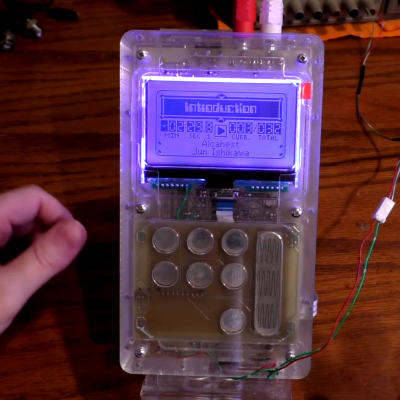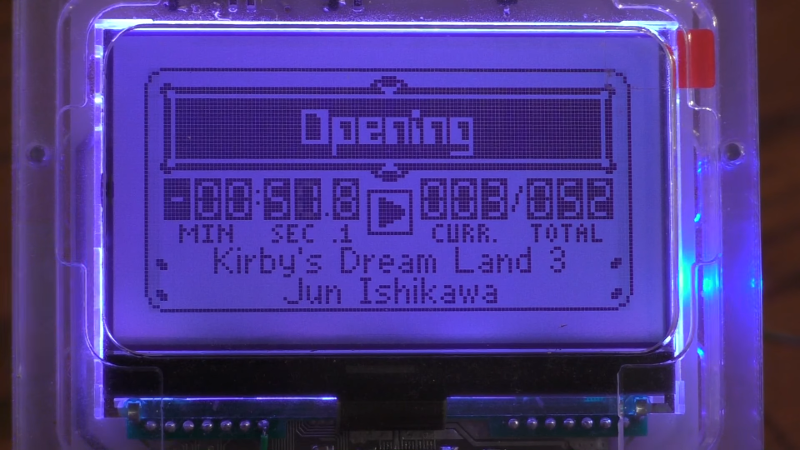Chiptunes are the fantastic, bleeping musical renditions of the soundchips of retro consoles past. Performers of the art overwhelmingly favour the various flavours of Game Boy, though there are those who work with such varied machines as the Commodore 64, Sega Genesis, and the Nintendo Entertainment System. A little more off the beaten track in the chiptune scene is the Super Nintendo, but [kevtris] has struck out and built a chiptune player for SNES-based music.
The heavy lifting is handled by an FPGA, which emulates the SNES’s S-SMP sound processor, and handles loading the music from the SPC-format files. Being chiptunes, these files store both the instrument data as well as the note data for the music. Audio output is clean and crisp, as heard in the test video.

Case design is where this project really shines. Laser cut clear acrylic is combined with a bright LCD character display and some LEDs which create an effect not unlike a glowing magical block from your 90s platformer of choice. It’s combined with some slick capacitive buttons that avoid the need to drill holes for bulky traditional buttons. [kevtris] goes through the case design, showing how it all fits together with a combination of screws and standoffs. Being built out of a series of essentially 2D slices, the case is stacked up one layer at a time.
What really stands out about this project is the fit and finish. There’s plenty of microcontroller and FPGA projects out there that can hum out a tune, but the attention to detail paid to the case design and the neatly laid out PCB really add polish to a project like this. For a different take, why not check out this chiptune player built around a Raspberry Pi?
[Thanks Morris!]
















Very nice!
Didn’t somebody tell this guy that your case has to be an ugly 3D printed mess. This case looks great.
There’s no accounting for taste. I think acrylic pretty much always has a cheap look and feel to it. The LEDs are not doing the project any service there. It looks like a dollar toy from a random Chinese market. Added to that is the lack of structural integrity of the stuff. Just looking at it makes it crack or scratch.
That being said, it looks like a very well executed and well rounded project. The case might not be according to my tastes, but it is obvious a lot of attention and care went into the project.
I wont even get into US vs. Chinese things since I drive a Chevy. Shit car by all means.
How ever I do think projects like these should be done with E-ink displays now days?
You could probably upgrade if you ever came thru with your kickstarter projects :P
Ah the Chevy Vaporware
Looks like the video is a year old. Maybe the author has made improvements since then?
Regardless, awesome project!
It really does sound good.
Nice build but the real hack is writing a chip emulator that will poop out a simple PCM file and then converting it to FLAC for use on modern audio devices.